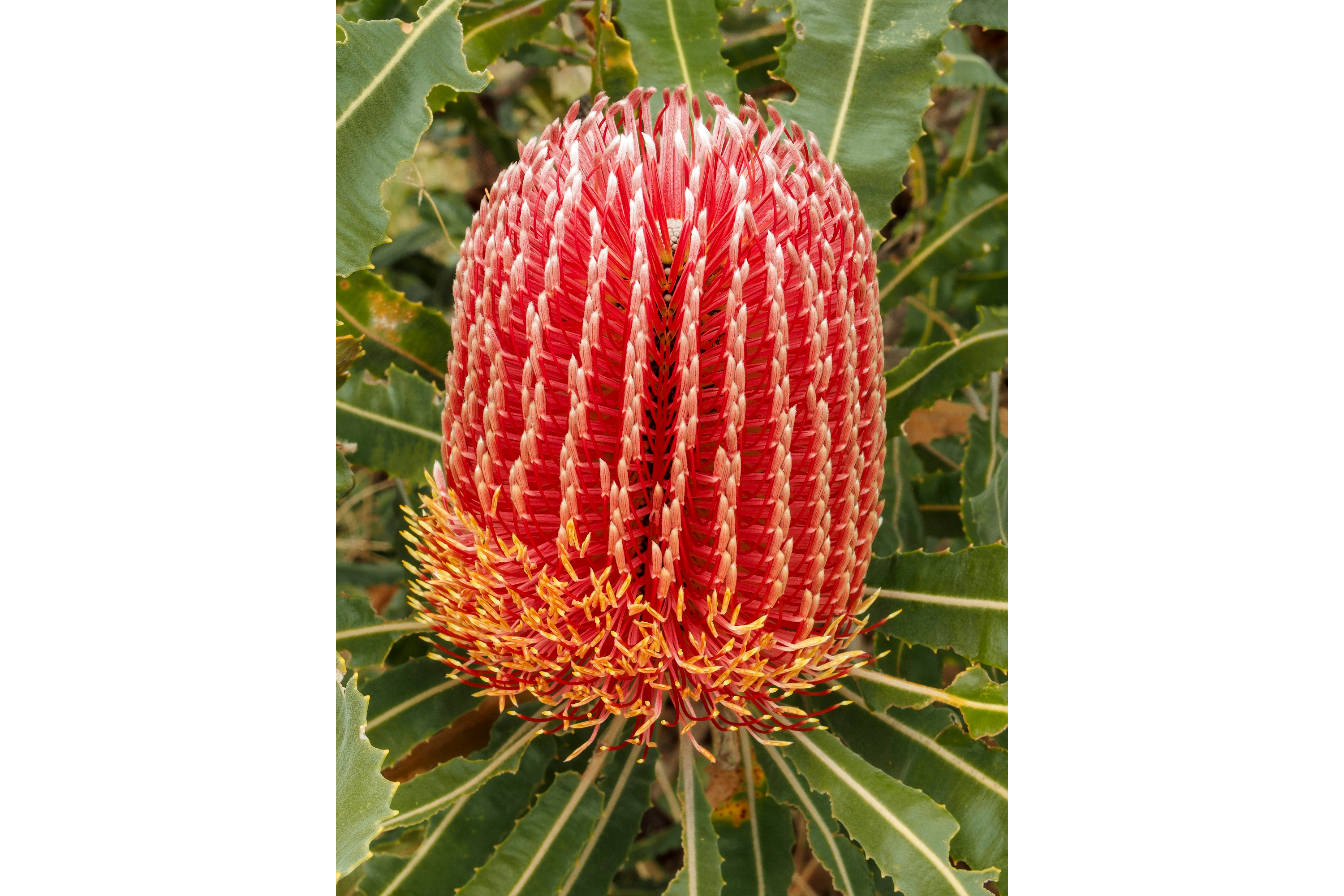Firewood banksia
(Banksia menziesii)

Description
Banksia menziesii, commonly known as firewood banksia, is a species of flowering plant in the genus Banksia. It is a gnarled tree up to 10 m (33 ft) tall, or a lower spreading 1–3 m (3.3–9.8 ft) shrub in the more northern parts of its range. The serrated leaves are dull green with new growth a paler grey green. The prominent autumn and winter inflorescences are often two-coloured red or pink and yellow, and their colour has given rise to more unusual common names such as port wine banksia and strawberry banksia. Yellow blooms are rarely seen. First described by the botanist Robert Brown in the early 19th century, no separate varieties of Banksia menziesii are recognised. It is found in Western Australia, from the Perth (32° S) region north to the Murchison River (27° S), and generally grows on sandy soils, in scrubland or low woodland. Banksia menziesii provides food for a wide array of invertebrate and vertebrate animals; birds and in particular honeyeaters are prominent visitors. A relatively hardy plant, Banksia menziesii is commonly seen in gardens, nature strips and parks in Australian urban areas with Mediterranean climates, but its sensitivity to dieback from the soil-borne water mould Phytophthora cinnamomi makes it short-lived in places with humid summers, such as Sydney. Banksia menziesii is widely used in the cut flower industry both in Australia and overseas. Banksia menziesii grows either as a gnarled tree to 10 m (33 ft), or a lower spreading 1–3 metres (3.3–9.8 ft) shrub, generally encountered at its northern limits in the vicinity of Eneabba-Mount Adams; thus, it declines steadily in size as the climate becomes warmer and drier further north. In the shrub form, several stems arise from the woody base known as the lignotuber. The trunk is greyish, sometimes with shades of brown or pink, and the 2–3 cm (0.79–1.18 in) thick rough bark breaks away easily. The new growth is covered in fine brownish hair, which wears away after two or three years, leaving smooth stems and leaves. Stems that will bear flower spikes the following year are generally thicker and longer. Oblong in shape and somewhat truncate at the tips, the leaves are grey-green in colour, 8–25 cm (3.1–9.8 in) long and up to 4 cm (1.6 in) wide. The new leaves are paler and finely downy. The leaf margins are serrated with many small 1–2 mm long triangular teeth. The lower surface of the leaf has a midrib covered in fine pale brown hair.
Taxonomic tree:







